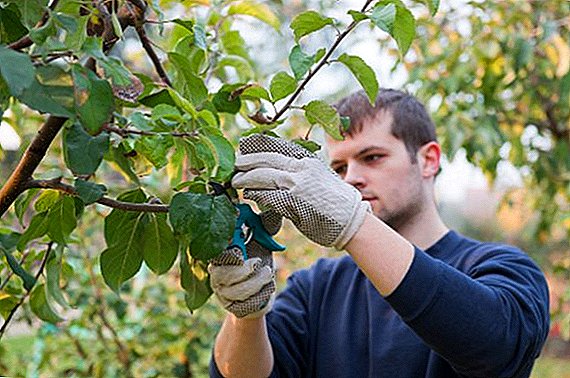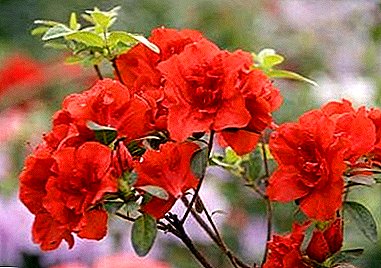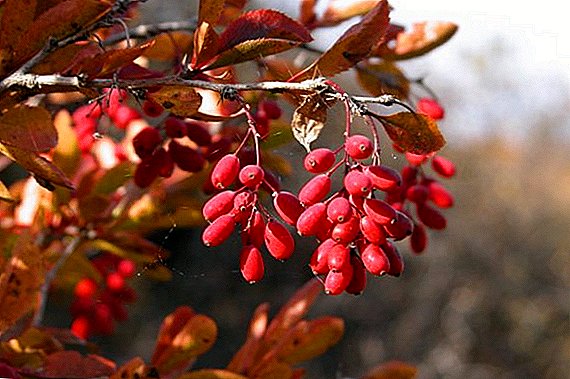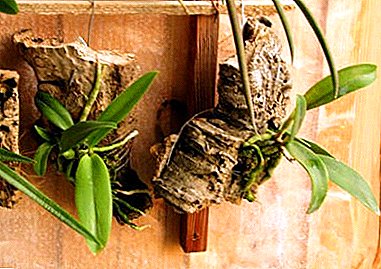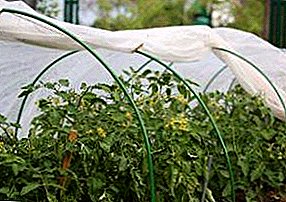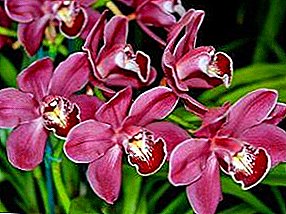
You have acquired the first orchid in your life and are ready to create paradise conditions for it.
That is, plenty of water, fertilize, blow off dust particles, etc.
The rush is generally correct, but for the plant to feel good, it is necessary to reproduce the conditions of the natural habitat as accurately as possible.
The desire to "pamper" a flower with constantly moist soil can destroy an orchid. When excessive watering her roots rot.
Orchids are watered only after the substrate has dried. Moderate drying of the roots for them is more natural condition than living in conditions of constant high humidity.
 Instructions like "water once a week" for the owner of an orchid are purely recommendatory in nature.
Instructions like "water once a week" for the owner of an orchid are purely recommendatory in nature.
The drying time of the substrate in a pot depends on a number of factors: the mass of the earthy coma, the room temperature, the light, the season, the size of the plant, etc.
The irrigation regime for each orchid is selected individually and only experimentally. In order not to suffer, finding out whether the ground is dry enough, pay attention to the condition of the orchid: the need for watering is signaled by visible signs of wilting of the bulb or lower leaves of the plant.
Water for a plant is not only a means of delivering nutrition and a medium of metabolic processes. Water partially performs a support function and protects plants from overheating.
Also read how to care for a gardenia flower.
Find out here, all about cultivating chess grouse.
When you need to dig bulbs of gladioli, see the link: //rusfermer.net/sad/tsvetochnyj-sad/vyrashhivanie-tsvetov/kogda-vikapivat-lukoveci-gladiolusa.html
Water for watering orchids
In their natural environment, orchids receive water in the form of precipitation. Rainwater is very mild and contains almost no mineral impurities. Therefore, for your favorite plants need soft, at least, moderately hard water.
Approximately determine the degree of hardness can be based on the rate of scaling in the kettle. You can take as a basis the experience of aquarists and use special tests such as "Sera gH Test" or "Sera kH Test".
For watering orchids suitable water with a hardness not higher than 10 degrees. Please note that there are tests for total and carbonate hardness of water.
Some tests for total hardness are insensitive to carbonates, so both measures will have to be determined.
Preparation of water for orchids can be carried out in the following ways:
- rainwater harvesting;
- upholding tap water;
- boiling;
- diluted with distilled water;
- filtration;
- chemical softening.
Rainwater harvesting
 Rainwater is the most natural food for orchids, but the chemical composition of tropical rain water is very different from the poisonous "cocktail" that pours on the heads of the inhabitants of megalopolises.
Rainwater is the most natural food for orchids, but the chemical composition of tropical rain water is very different from the poisonous "cocktail" that pours on the heads of the inhabitants of megalopolises.
If you have a country house, you can collect water for orchids there.
The place and dishes for collecting water should be clean, the collected water should be stored in a cold, dark place to prevent the development of bacteria, protozoa and fungi.
This method is the cheapest, but if you do not have the opportunity to collect relatively clean rainwater, it is better to give it up.
Boiling water
Hydrocarbonate (also temporary) water hardness is neutralized relatively easily. For this water boil enough.
In this case, an excess of calcium and magnesium will precipitate and the water will become softer. Boiling water removes not only salts, but also gases dissolved in water, so before watering, the water must be saturated with oxygen, by pouring it from one container into another or agitating vigorously in a bottle.
This technique is recommended as mandatory in any method of preparing water for irrigation. Another way to restore the normal gas composition is to allow the water to settle for several days.
Chemical softening
 Excess calcium salts can be removed and chemically.
Excess calcium salts can be removed and chemically.
In the flower and chemical retailers there is oxalic acid for sale.
In five liters of tap water dissolve 1/8 teaspoon of crystalline acid and leave for a day.
After settling, the water is carefully drained, trying not to stir the precipitate formed on the bottom. Elimination of carbonate hardness helps to get water with the necessary acidity.
For watering orchids need water with a weak acid reaction, Ph 5. Acidity is determined using a universal indicator paper.
If Ph is greater than five, water should be acidified. For example, drip lemon juice into it. Another effective method of acidifying water is settling with the addition of peat.
Features correct feeding clematis spring.
Find out the specifics of reproduction of clematis with green cuttings: //rusfermer.net/sad/tsvetochnyj-sad/klematis/sekrety-razmnozheniya-klematisa.html
Dilution with distilled water
Distilled water is completely purified from dissolved salts and is not suitable for watering orchids. It is used to dilute settled tap water to obtain the desired softness.
At first, you will have to tinker with the tests, selecting the necessary proportions, but then all the necessary actions will be performed according to the standard scheme.
Use of household filters
Modern filters well purify tap water from heavy metals, hardness salts, organic impurities.
This is the most effective way to eliminate sulphate water hardness.
Water settling
 Even if you have perfectly soft water flowing from a tap with a Ph close to 5, you definitely need to defend it for several days.
Even if you have perfectly soft water flowing from a tap with a Ph close to 5, you definitely need to defend it for several days.
During this time, harmful impurities introduced for disinfection will evaporate from the water.
Orchids are tropical plants, so water for watering should be heated to about 35 degrees or slightly higher.
Methods of watering orchids
You can water the orchids in several ways:
- spraying;
- using a watering can;
- immersion;
- arrange a hot shower.
Spraying
This method is used for watering orchids planted in soil blocks.
Spray the plants better in the morning. For watering orchids in pots spraying spray gun is not suitable.
Immersion
 For watering by immersing the pot with a plant simply immersed in water.
For watering by immersing the pot with a plant simply immersed in water.
For a pot measuring 12 x 12 cm, 30 seconds is enough. After this, the pot is taken out and allowed to drain.
This method is used only for watering healthy plants.
If the substrate is affected by mold or the plant is in the phase of active flowering, watering by immersion should be abandoned so as not to destroy the orchid.
Watering of watering can
 When watering from watering cans, it is important that water does not fall into the leafy sinuses.
When watering from watering cans, it is important that water does not fall into the leafy sinuses.
The plant is watered in a thin stream until water flows from the bottom.
After that, you need to wait a few minutes until all the excess water runs out.
Watering is repeated three or four times. Excess water from the pan is poured. Watering is recommended to coincide with the morning.
The silverweed goose will become fine decoration of any seasonal dacha.
Read detailed information about the multi-year enoter simply by clicking on the link: //rusfermer.net/sad/tsvetochnyj-sad/vyrashhivanie-tsvetov/enotera-mnogoletnyaya-posadka-i-uhod-za-rasteniem.html
Hot shower
The most controversial method of watering. Supporters of the hot shower argue that it most accurately mimics tropical warm rain, washes away pests and dust from the plant.
It is believed that this watering stimulates foliage and active flowering. Opponents explain this by a natural reaction to stress and warn that the abuse of a hot shower can destroy the plant. But not immediately, but in a few months or years.
Water for the shower should have a temperature of 35-40 degrees, as for ordinary watering. A pot with a plant put in a bath and poured from a watering can.
After that, the flower is left to drain the excess water. After about an hour, the plant should be wiped out, that is, water should be removed from the sinuses of the leaves and the core.
If whitish saline stains remain on the leaves of the flower, they should be carefully wiped off with a soft cloth moistened with diluted lemon juice.


 Also read how to care for a gardenia flower.
Also read how to care for a gardenia flower. Features correct feeding clematis spring.
Features correct feeding clematis spring. The silverweed goose will become fine decoration of any seasonal dacha.
The silverweed goose will become fine decoration of any seasonal dacha.
